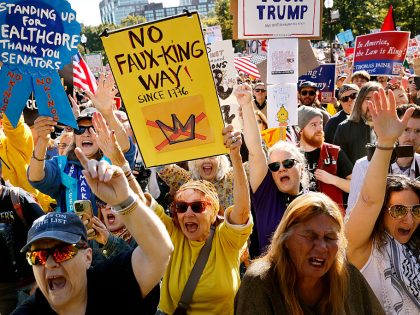
After No Kings, It’s Time to Escalate
After the massive No Kings protests, we need bigger, more disruptive nonviolent campaigns that can go viral and peel away Donald Trump’s pillars of support.
Page 1 of 5Next
Eric Blanc is an assistant professor of labor studies at Rutgers University. He blogs at the Substack Labor Politics and is the author of We Are the Union: How Worker-to-Worker Organizing is Revitalizing Labor and Winning Big.

After the massive No Kings protests, we need bigger, more disruptive nonviolent campaigns that can go viral and peel away Donald Trump’s pillars of support.

As New York City mayor, Zohran Mamdani will have a range of options to encourage large numbers of workers to unionize — essential both for improving working-class living standards in an unaffordable city and building an organized force to win his agenda.

Leftists and progressives throughout the country have much to learn from how democratic socialist Zohran Mamdani pulled off an unprecedented upset last night.

In an era when unions routinely endorse candidates beholden to the bosses, Zohran Mamdani’s inroads with organized labor are a significant step forward.
American labor’s finances have never been stronger. And yet its horizons have never been narrower.

There are no guarantees that any approaches, new or old, to reversing the labor movement’s decline will succeed. But Eric Blanc makes a case for why we should wager on worker-to-worker unionism.

Factory jobs are not inherently good jobs. Even if Donald Trump’s trade policies bring factories back to the United States, workers need unions to make those jobs well-paying and safe — and Trump has been the most anti-union president in years.

Labor will only survive the Trumpification of America through confrontation.

The “Fighting Oligarchy Tour” rallies headlined by Bernie Sanders and Alexandria Ocasio-Cortez can become something much bigger — if Bernie and AOC direct their rally attendees into sustained organizing efforts against Donald Trump and Elon Musk.

Elon Musk would like you to think he is invincible right now. But the world’s richest man is actually extremely vulnerable to public pressure at the moment — public pressure that federal workers and their unions can take advantage of.

Donald Trump is rolling out a blitz of attacks on workers in hopes of paralyzing organized labor’s energy to fight back. But unions can only survive this onslaught by fighting, not by burying their heads in the sand.
We asked scholar Eric Blanc to recommend reading on the party’s contentious relationship to the trade union movement.

Donald Trump will do his best to undermine unions. But the labor movement still has momentum on its side and numerous opportunities to seize. Trump’s presidency has to be a time for labor action, not despair.

Donald Trump’s reelection is awful, but wallowing in misery only benefits his far-right agenda — and risks squandering the many opportunities we actually have to stop the worst of his plans.

To the surprise of many labor activists and leftists, Joe Biden’s National Labor Relations Board has boosted bottom-up unionism since 2020 — a fact that has key strategic implications for union revitalization efforts.

Interest in unions and workplace organizing is high, but proactive workers have few opportunities to launch their own organizing drives. The Emergency Workplace Organizing Committee is trying to change that.

The late labor strategist Jane McAlevey’s horizons were never limited to winning particular campaigns or even to revitalizing unions. What she wanted above all, and what she believed was possible if our side got “serious,” was for workers to take power.

The UAW’s defeat at a Mercedes plant in Alabama was crushing. It’s also the cost of waging risky, potentially transformative fights. If labor wants to win big, it can’t be afraid to lose big.

Can the new models of union organizing coming out of recent high-profile campaigns like Starbucks be a potential way to capture the current upsurge of support for and interest in unions? Labor scholar Eric Blanc thinks they can.

At the heart of the current uptick in union organizing at companies like Starbucks has been “worker-to-worker unionism.” That model could be key to scaling up organizing and revitalizing the labor movement.